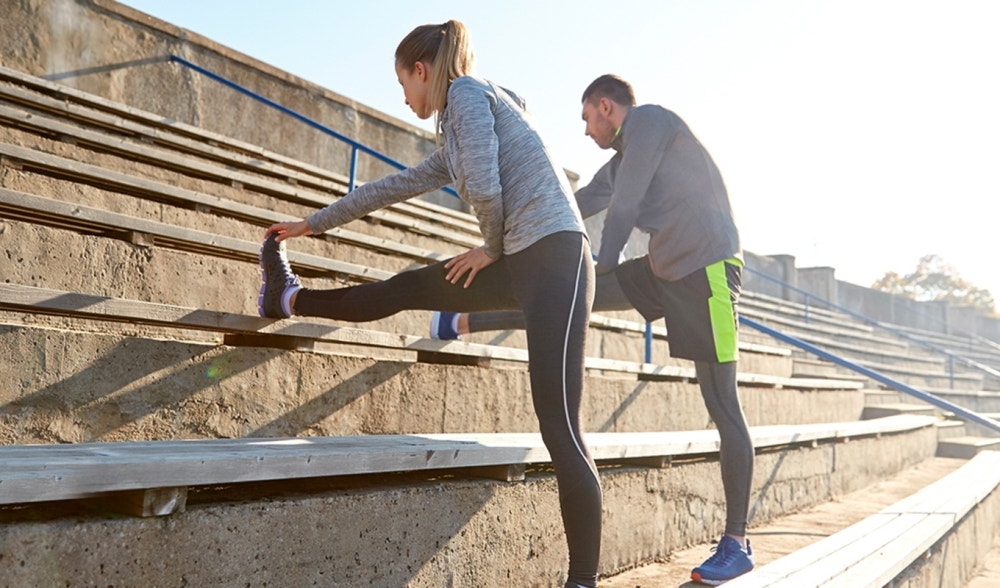When it comes to prevention of sports injuries, often the first thing you think about is posture . A thought so deeply rooted in people that when you are faced with pains in the shoulder, back, etc. the cause will always be traced back to a "postural problem". A thought often reinforced by health professionals, who lead us to think that there may be an ideal posture to pursue that will make us immune to pain.
Despite the many studies in the literature that compare the posture of people with pain and those who do not, without any difference being highlighted, this information is frequently ignored.
Some professionals in the sector continue to base the interventions only on their personal experience, ignoring that the particular background of each of them could be inadequate, especially if not based on scientific evidence.
Right after the posture, flexibility seems to be the cause of all ills: you get hurt because you are "stiff" and because you don't stretch!
Injury prevention would thus leave room for posture correction and imaginative sessions of muscle rebalancing of long, short, weak muscles, etc.
Injury prevention: is there an association between posture and pain?
On the subject of injuries in sport, some issues need to be clarified:
- Is an inversion of the lumbar curve predictive for injury?
- Does stretching or foam roller reduce the risk of injury?
- Will a kyphotic back or anterior shoulder cause an injury?
In recent years, scientific evidence has shown us that there is no relationship between posture and pain :
- Posture is not responsible for bachelor-humeral impingement (Subacromial impingement syndrome: The role of posture and muscle imbalance, Jeremy S. Lewis 2005) .
- An accentuated dorsal kyphosis does not cause shoulder pain (Is thoracic spine posture associated with shoulder pain, range of motion and function? A systematic review, E. Barret 2016).
- No relationship between alteration of normal cervical lordosis and pain (The association between cervical spine curvature and neck pain, D. Grob 2007).
- Spinal curves are unrelated to spinal pain (Spinal Curves and Health: A Systematic Critical Review of the Epidemiological Literature Dealing With Associations Between Sagittal Spinal Curves and Health, Sanne Tofgaard Christensen 2008).
- Nessuna relazione tra lordosi lombare e dolore (How consistent are lordosis, range of movement and lumbo-pelvic rhythm in people with and without back pain? Robert A. Laird 2016).
Does stretching reduce sports injuries?
In 2005, the Clinical Journal of Sports Medicine published a systematic review of scientific evidence regarding the effects of stretching in reducing injury, concluding that stretching does not reduce injury risk (Effect of stretching on sport injury risk: a review, Hart L. 2005).
In 2014, a meta-analysis (26610 subjects) published in the British Journal of Sports Medicine concluded that stretching does not reduce the risk of injury while strength training plays a key role in prevention .
On the contrary, it must always be considered that stretching, when done in an intense way,  tends to increase the mechanical stress to which a given muscle is subjected, and therefore should be calculated in quantifying the workload administered.
tends to increase the mechanical stress to which a given muscle is subjected, and therefore should be calculated in quantifying the workload administered.
Even myofascial release techniques (such as the foam roller ), while contributing to an improvement in ROM in the short term, do not have positive effects on injury prevention.
Conclusions
Joint mobility jobs can undoubtedly improve some skills, such as weightlifting or gymnastics, but they do not reduce the risk of injury. Furthermore, the quality of movement is certainly important from the point of view of performance, but it does not play a fundamental role in preventing injuries: if you move well, it does not mean that you will not have injuries.
It has been widely demonstrated that musculoskeletal pain is multifactorial and poorly correlated to posture, so dedicated work does not reduce the risk of injury.
To date, load monitoring and working with overloads are the best strategies for preventing injuries.
Authors
Dr. Ilio Iannone Physiotherapist Osteopath CSCS
Prof Dr. Massimiliano Febbi PhD Physiotherapist Osteopath Motor Sciences CSCS
References
- The science behind why assessing and blaming posture for pain is bs , dr ben cormack
- The training-injury prevention paradox: should athletes be training smarter and harder? Dr tim gabbett
- The definitive guide to posture & pain in 3 minutes flat!, dr ben cormack
- Stretching science shows that a stretching habit isn't doing much of what people hope, dr paul ingraham painscience.com
- Posture and pain. Are they connected or confounded? Sean overin, bhk, mpt


Comments
Write a comment about the article